Details for our 25th Anniversary event, Saturday, October 5th, 2024, coming soon!
Scroll down to the bottom of the page for details about the Bird of the Year, the Bald Eagle, check out our old schedule for ideas about this years’ event, and more!
Please visit local businesses in Ridgefield: Sportsman’s Steakhouse & Saloon, Old Liberty Theater – Season’s Coffee Shop, Bunnies, El Rancho Viejo, Ridgefield Pioneers Market, Starliner Deli, Ridgefield Floral & Gifts, and Ridgefield Hardware.
BirdFest & Bluegrass is a joint event planned in a partnership between the City of Ridgefield, The US Fish & Wildlife Service, and the Friends of the Ridgefield National Wildlife Refuge that includes in-person self-led activities, crafts, musical performances, shopping, tours, and a Pickers Festival.
Bald Eagle
Haliaeetus leucocephalus
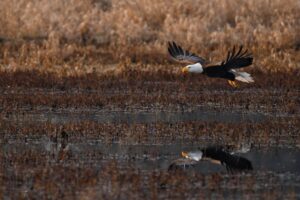
The majestic Bald Eagle has been designated as the Bird of the Year for the 25th Anniversary of BirdFest & Bluegrass, shining a spotlight on these incredible raptors and their important role in our ecosystem.
Washington is home to a thriving population of Bald Eagles, with one of the best places to observe them being the Ridgefield National Wildlife Refuge. This refuge provides vital habitat for these birds, offering an abundance of food sources and suitable nesting sites.
Known for their impressive wingspan, striking plumage, and recovery from the endangered species list, their presence is not only a visual delight but also a testament to the successful conservation efforts in Washington and across the country, and the importance of preserving their natural habitats.
The lifespan of a Bald Eagle in the wild typically ranges between 20 to 25 years, with some living as long as 30 years. These majestic birds go through a fascinating process of transformation during their lives, particularly noticeable in their feather coloration change.
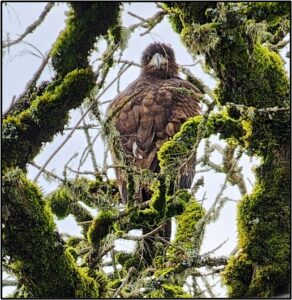
Bald Eagles are not born with the distinctive white head and tail feathers for which they are so well known. Instead, eaglets hatch covered in light grey down which is replaced by brownish-black feathers as they grow. The transition from this dark plumage to the iconic white head and black body does not occur until around five years old when they reach sexual maturity.
This five-year period also marks significant milestones in terms of behavior, habitat exploration, hunting skills development, and social interactions among peers. The gradual transformation signifies maturation and readiness to engage in mating rituals such as aerial displays – an important aspect for sustaining the species.
While it may seem confusing that these powerful creatures don’t acquire their signature appearance until later in life, it’s just another testament to nature’s complex yet beautiful design. This progression ensures that younger Bald Eagles can be recognized by mature individuals, avoiding territorial disputes and maintaining harmony within this magnificent bird community. It adds an extra layer of intrigue into understanding the lifecycle and adaptive strategies employed
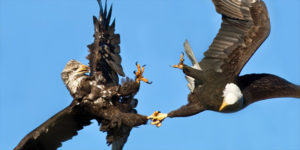
by these remarkable birds for survival throughout generations.
Next time you visit Ridgefield National Wildlife Refuge, keep an eye out for these iconic birds as they swoop through the sky or perch high atop a tree. Witnessing their beauty and grace in person is truly a memorable experience.
In Washington State, Bald Eagles begin their nesting process as early as February. This is when milder weather conditions begin, which makes it conducive for these birds to start their breeding and nesting activities.
The eagles construct large nests located high in tree-tops near water bodies, showcasing an incredible feat of engineering and effort from these birds. These nests serve as homes where they raise their young ones. The choice of February to begin this activity is strategic; it allows
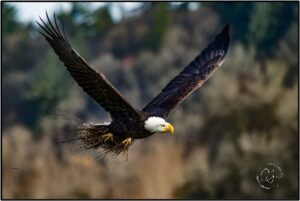
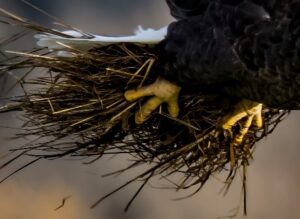
the eggs laid by female Eagles enough time to hatch, giving the fledglings adequate time to grow strong before winter sets in again.
During this period, bird watchers get an opportunity to observe these magnificent creatures up close as they engage in various behaviors such as courtship rituals, hunting for food, and taking care of their offspring.
However, human disturbances can greatly affect this delicate process, hence it’s vital for people visiting these areas during nesting season to respect boundaries and adhere strictly to rules put in place by wildlife authorities. This ensures that we coexist harmoniously with these iconic birds while also preserving them for future generations.
Let’s celebrate the Bald Eagle as the Bird of the Year and continue to protect and cherish these magnificent creatures in Washington State and beyond.